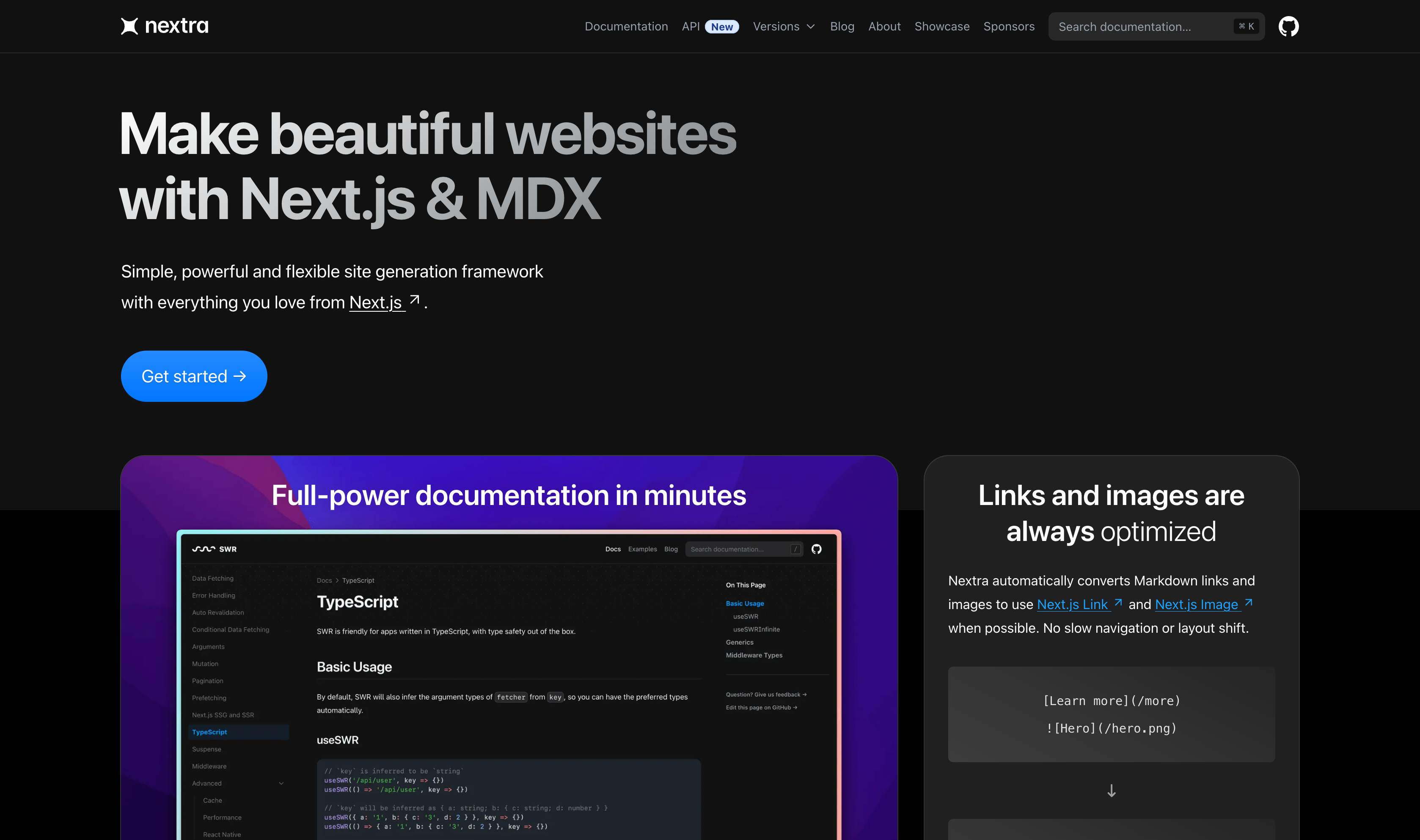How We Set Up Our Blog with Nextra 4
Learn how we integrated Nextra 4 into our Next.js application to create a powerful, MDX-based blog with full-text search and beautiful theming.

We’re excited to launch the Evermuse blog! In this first post, we’ll share how we integrated Nextra 4 into our existing Next.js application to create a modern, performant blog that aligns perfectly with our product’s design.
Why Nextra?
When deciding on a blogging solution, we had several requirements:
- MDX Support - We wanted to write in Markdown while having the flexibility to embed React components
- Performance - The blog needed to be as fast as our main application
- Search - Built-in full-text search was essential for our readers
- Theming - It needed to match our existing design system
- SEO-Friendly - Great metadata handling and static generation
Nextra 4 checked all these boxes and more.
The Setup Process
1. Installing Dependencies
First, we installed Nextra and the blog theme:
npm install nextra nextra-theme-blog @next/mdx @mdx-js/loader @mdx-js/react2. Configuring Next.js
We updated our next.config.mjs to include Nextra:
import nextra from 'nextra'
const withNextra = nextra({
// Nextra configuration options
})
// Add turbopack configuration for MDX
const nextConfig = {
turbopack: {
resolveAlias: {
'next-mdx-import-source-file': './mdx-components.tsx'
}
},
// ... rest of your config
}
// Wrap our existing Next.js config
export default withNextra(nextConfig)3. Creating the MDX Components File
A critical step is creating the mdx-components.tsx file in the root directory:
import { useMDXComponents as getThemeComponents } from 'nextra-theme-blog'
import type { MDXComponents } from 'mdx/types'
const themeComponents = getThemeComponents ? getThemeComponents({}) : {}
export function useMDXComponents(components: MDXComponents): MDXComponents {
return {
...themeComponents,
...components,
}
}4. Creating the Blog Layout
We created a custom layout in app/blog/layout.tsx that integrates Nextra’s blog theme components:
import { Footer, Layout, Navbar } from 'nextra-theme-blog'
import { Head } from 'nextra/components'
import { getPageMap } from 'nextra/page-map'
import 'nextra-theme-blog/style.css'
export default async function BlogLayout({ children }) {
const pageMap = await getPageMap()
return (
<html lang="en" suppressHydrationWarning>
<Head backgroundColor={{ dark: '#0f172a', light: '#ffffff' }} />
<body>
<Layout>
<Navbar pageMap={pageMap} />
{children}
<Footer>
{/* Custom footer content */}
</Footer>
</Layout>
</body>
</html>
)
}Key Features We Love
Full-Text Search
Nextra provides built-in search functionality that indexes all our blog content automatically. Readers can quickly find the information they need.
Syntax Highlighting
Code blocks are automatically highlighted with support for multiple languages:
def analyze_customer_feedback(feedback):
"""Analyze customer feedback using AI"""
insights = ai_model.analyze(feedback)
return {
'sentiment': insights.sentiment,
'key_topics': insights.topics,
'recommendations': insights.recommendations
}MDX Flexibility
We can embed React components directly in our posts, making content more interactive and engaging.
Static Generation
All blog posts are statically generated at build time, ensuring fast load times and excellent SEO performance.
Troubleshooting Common Issues
Module Resolution Error
If you encounter the error Module not found: Can't resolve 'next-mdx-import-source-file', ensure:
- Your
mdx-components.tsxfile exists in the root directory - The turbopack configuration in
next.config.mjsincludes the proper path resolution - All MDX-related dependencies are installed
Styling Issues
Make sure to import the blog theme styles in your layout:
import 'nextra-theme-blog/style.css'What’s Next?
Now that our blog is live, we’re excited to share more content with you! Expect posts about:
- Product Management Best Practices - How to effectively gather and analyze customer feedback
- AI in Product Development - Leveraging AI to make better product decisions
- Customer Insights - Deep dives into understanding user behavior
- Technical Tutorials - How to integrate Evermuse into your workflow
- Case Studies - Real-world examples of successful product improvements
Conclusion
Setting up Nextra 4 with our Next.js application was straightforward once we understood the configuration requirements. We now have a powerful, flexible blog that integrates seamlessly with our existing infrastructure.
The key to success was properly configuring the mdx-components.tsx file and ensuring the turbopack resolver could find it. With these pieces in place, Nextra handles everything else beautifully.
Stay tuned for more posts as we share our journey in helping product teams build better products through AI-powered customer insights!
Have questions about our setup or want to share your own Nextra experience? Contact us - we’d love to hear from you!